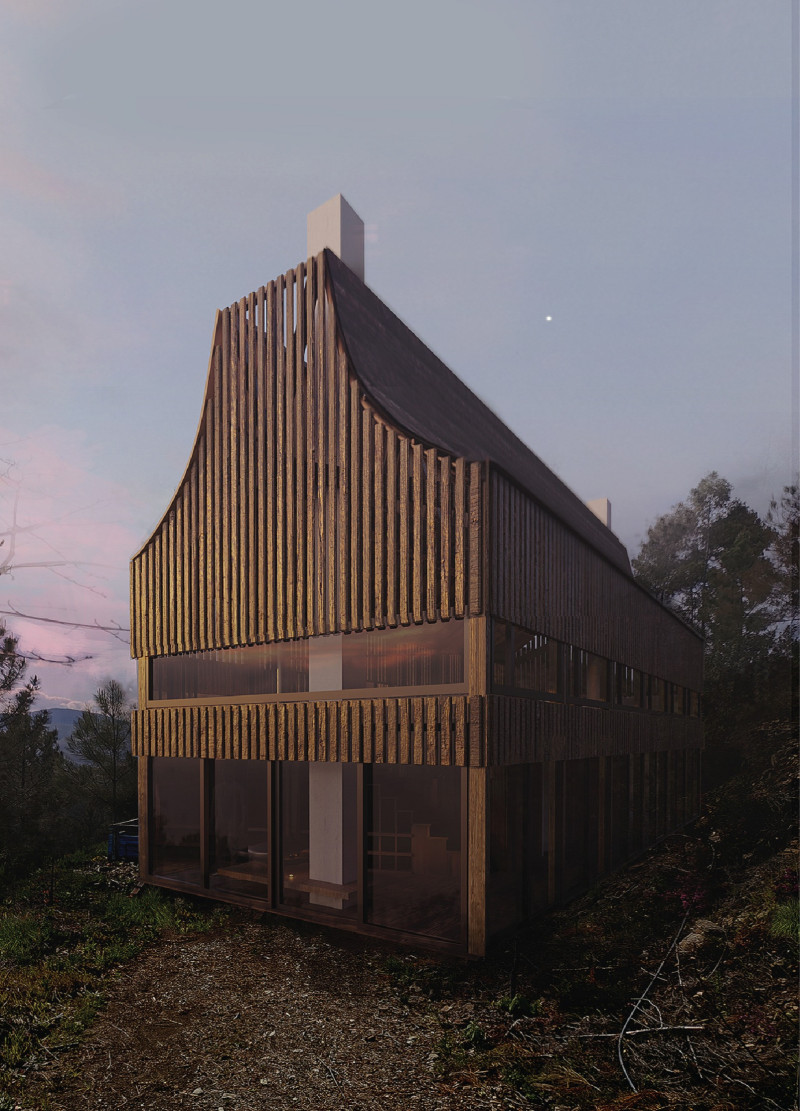5 key facts about this project
At the heart of the design lies a concept that emphasizes openness and transparency. Large windows and thoughtfully placed openings allow natural light to permeate the interiors, effectively blurring the boundaries between the indoor and outdoor spaces. This design choice not only enhances the user experience but promotes sustainability by reducing reliance on artificial lighting during the day. The overall layout is calculated to encourage movement and flow, with well-defined pathways that guide occupants through different areas of the building. Communal spaces are generously sized and strategically located to inspire gatherings and social interaction, supporting the building's function as a community hub.
The material palette employed in this project is a testament to a commitment to durability and environmental responsibility. Key materials include sustainably sourced timber, which is prominently featured in both structural and decorative elements, providing warmth and a tactile experience that complements the sleekness of glass and steel components. The use of concrete is also notable—a material chosen not only for its robustness but for its thermal mass properties, contributing to energy efficiency. The balance between these materials reflects a keen design sensibility, where each element plays a role in both the aesthetic and functional aspects of the building.
The architectural design incorporates innovative techniques that respond to the local climate. For instance, strategic overhangs and shading devices mitigate heat gain during peak sunlight hours, reducing the reliance on mechanical cooling systems. Additionally, green roofs and terraces are integrated into the design, promoting biodiversity and providing areas for recreational activities. These features underscore a holistic approach to architecture, where environmental considerations are woven into the fabric of the design.
Unique to this project is its focus on community engagement and inclusivity. It has been designed with easy accessibility in mind, accommodating individuals of all ages and abilities. Thoughtful details, such as ramps, wide corridors, and accessible restrooms, contribute to an inviting environment that prioritizes user experience. Moreover, art installations and local cultural elements are seamlessly integrated into the design, celebrating the identity of the community it serves.
The project stands as a reflection of contemporary architectural ideas that balance form, function, and environmental responsibility. Its thoughtful design outcomes not only cater to the immediate needs of users but also consider long-term sustainability and resilience. The result is an architectural endeavor that fosters a sense of belonging and encourages social interaction, ultimately enriching the urban fabric.
The narrative of this project is further explored through various architectural plans, sections, and designs that detail the meticulous thought process behind its execution. Readers are encouraged to delve deeper into these elements to appreciate the full scope of ideas and innovations evidenced throughout this endeavor. Engaging with architectural documentation will provide further insight into the underlying principles that guide this project.


























